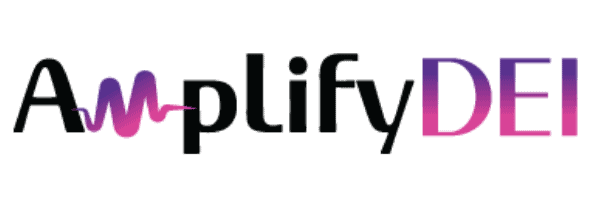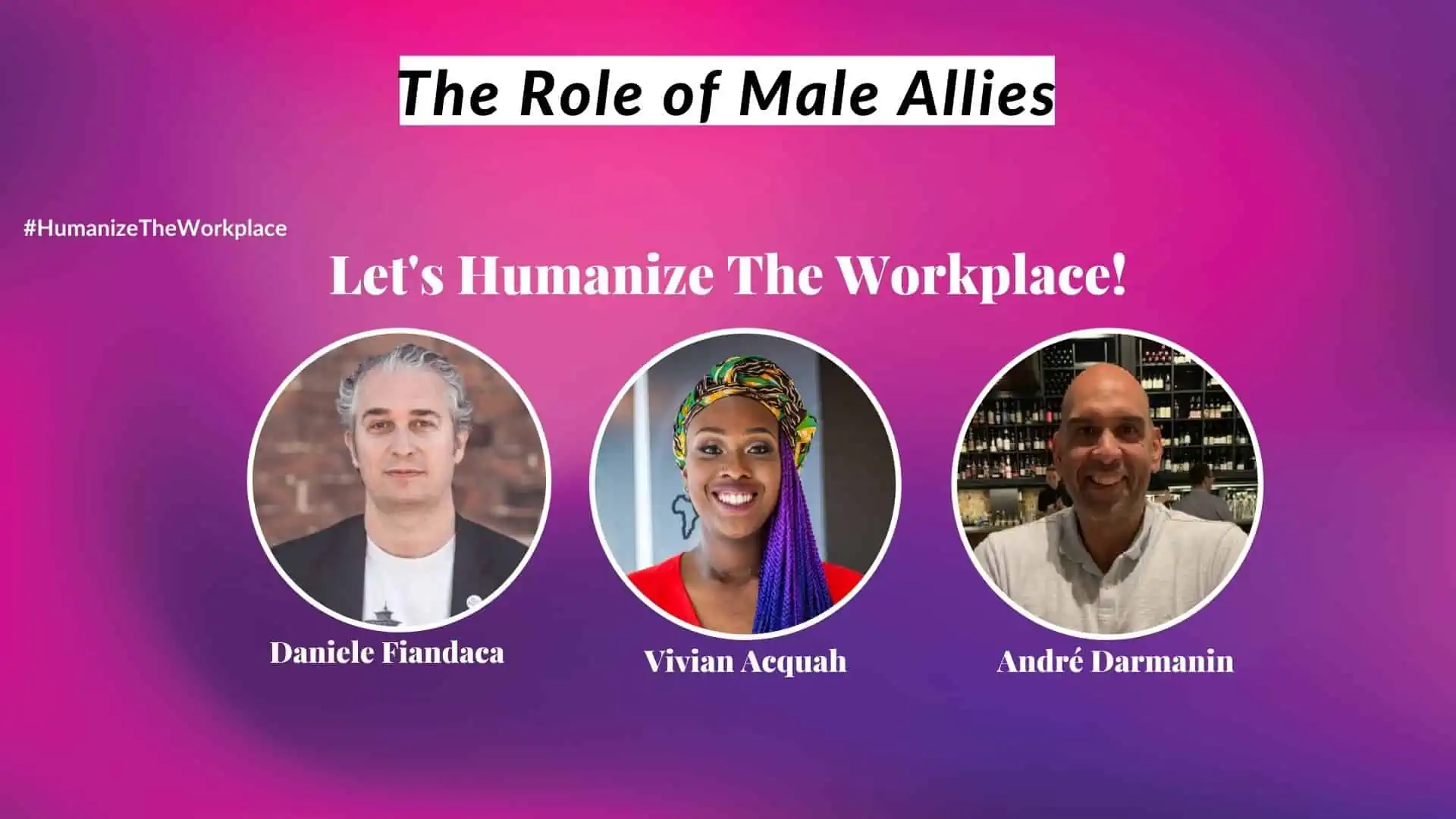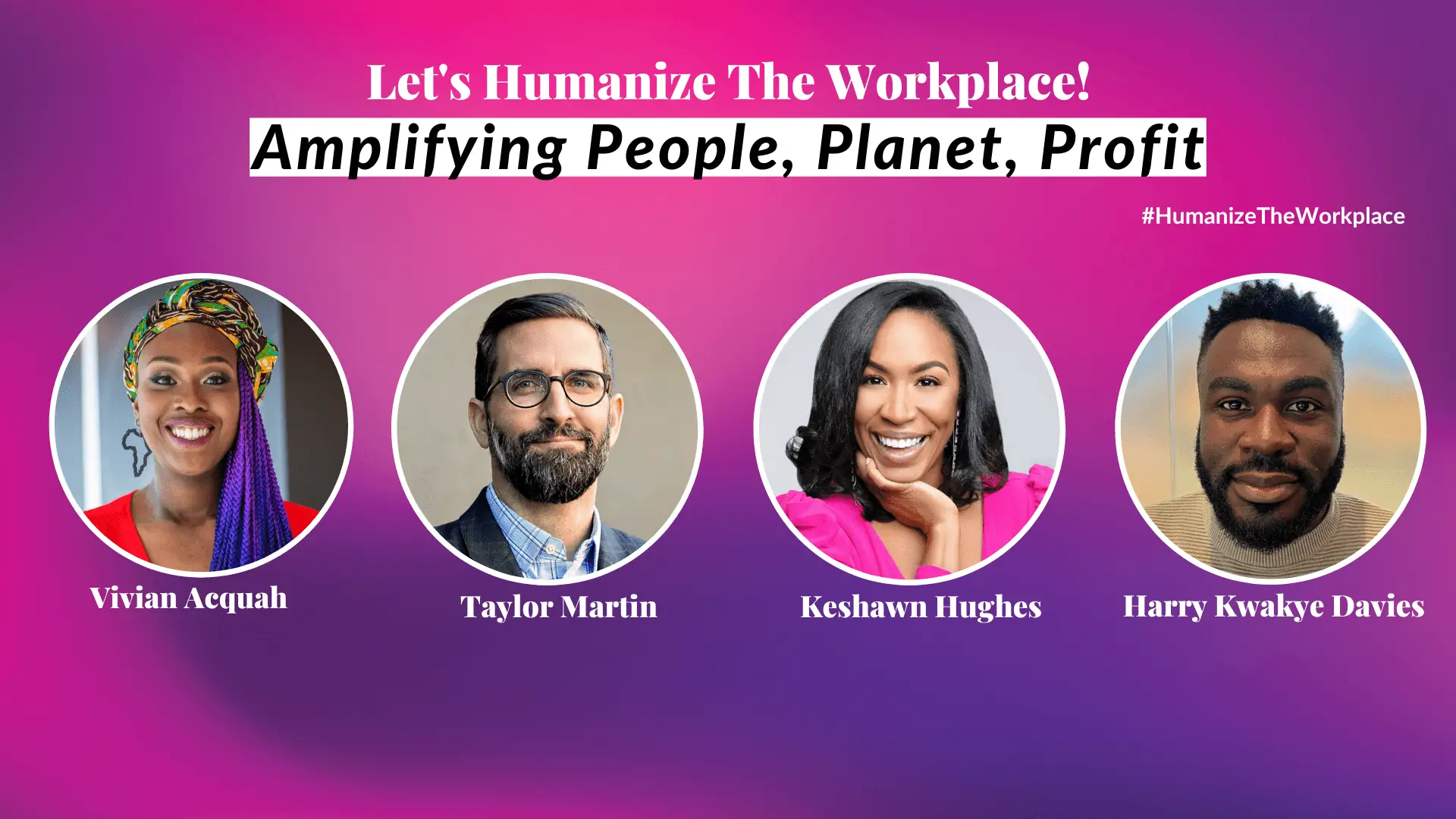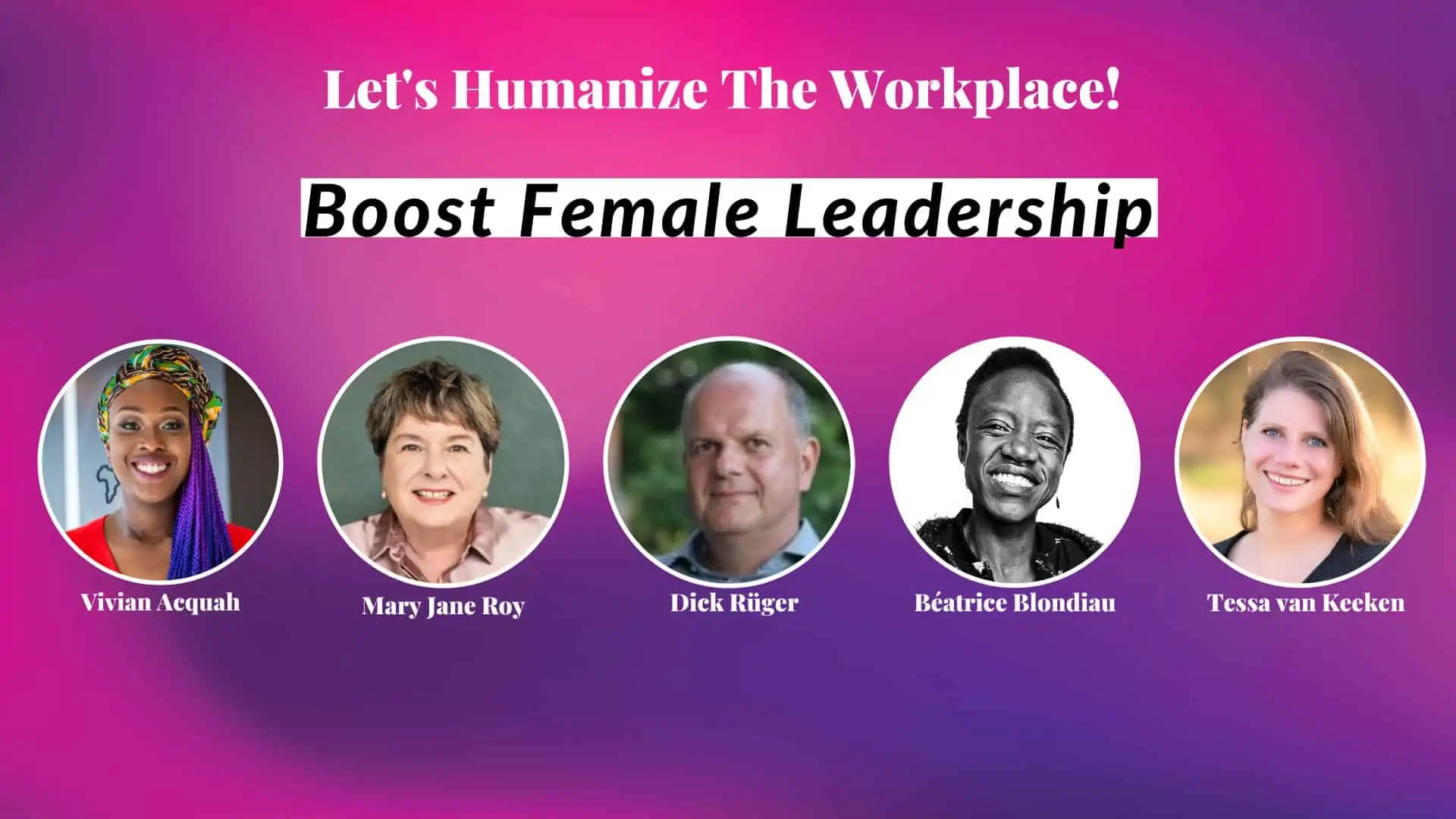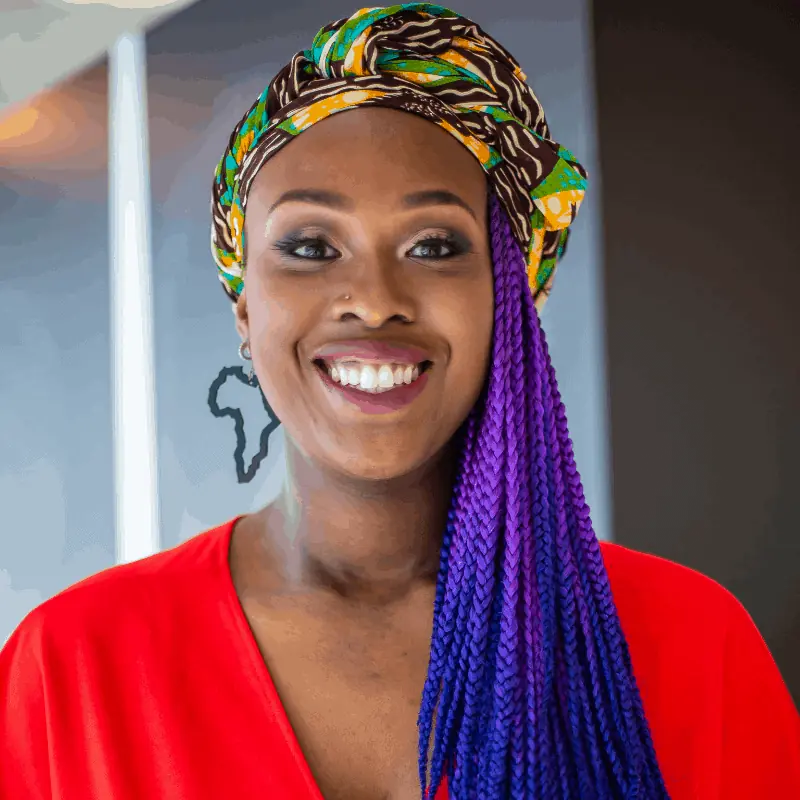Amplify DEI is a conference based on a simple question: what would it look like if DEI (diversity, equity, and inclusion) were at the forefront of every workplace? Just take a moment to imagine that. What would it look like? One of the words used in this panel discussion was “kaleidoscope”—a whole spectrum of color representing the unique diversity all around us.
This panel discussion was specifically about leveling up ethnic diversity in our workplaces. So, it’s asking the question: what would our organizations look like if people from all races, cultures, and backgrounds were able to show up as their authentic selves… Or show up at all! So, it starts, first, with inclusion and then with amplification of diversity.
The panelists participating in this important conversation are:
- Mira Culic Griffiths, Leadership Coach at The Mind Takeaway;
- Jessy Halison, Engineering Manager at Ecosia and DEI in Tech Coach;
- Lara Manqui, Growth Coach for Female Technologists and Social Justice Champion;
- Naomi Williams, JEDI Catalyst and Career Development Coach;
- Host Vivian Acquah, Inclusive Workplace Wellness Advocate.
Since this panel was titled “Level Up Ethnic Diversity,” we’ll break the conversation down into a few of those levels. First, why do we need to level up? Next, look at the numbers and give context and accountability to them. Finally, practical steps for leaders to create change in their organizations.
Level 1: Why do we need to level up?
For a lot of those reading this or participating in Amplify DEI, the answer is obvious. First, we need to level up ethnic diversity because diversity itself is crucial and necessary. But to break it down a bit further, ethnic diversity in leadership is essential for a company to adequately represent its customer and client base, which is diverse.
Panelist Jessy Halison shared a story of a company that published a campaign with a racial slur in it. They did so in attempts to be edgy and even ran it by the DEI group. That DEI group did not give their blessing to publish, but none of them had a seat at the decision-making table. So, it was published, and, unsurprisingly, there was negative pushback. As Jessy’s story illustrates, excluding diverse voices from decision-making can have real-life consequences.
Leaders who are still unclear why there is a need to level up ethnic diversity may be falling into the “survivor bias.” Jessy explained that this is a way of viewing this where you only look at those who made it. For example, if you have one woman of color on your senior leadership team, you may think that your company has arrived! The box is checked. But really, that woman was able to make it to that position despite many obstacles in her way. So it would do the company better to look at, how did she make it? What about those who are not here? How can we make the path more accessible for more to join us?
Vivian Acquah reminded us of a recent legislation in the European Union, which proposed allowing employers to have the ability to fire someone who wears a hijab. The fact that that type of legislation is even considered shows that more work needs to be done. As Vivian put it, if more ethnic people were working in the European Court of Justice, they would have blocked this.”
“Ask: which point of view is not represented in your group? Who are you missing? Who is missing inside the room in the room with you? Because you already know what you already know. But you don’t know what you don’t know.”
-Jessy Halison
Level 2: Start with the numbers
Once leadership understands why they need to start leveling up in ethnic diversity, they can start looking at their numbers. Consider your clients and customers—does your leadership and staff team reflect the diversity of the people you are serving?
Then, collect data about the diversity of your staff team. Panelist Lara Manqui strongly encourages taking an intersectional lens when looking at the data, too. Try to collect and report on as many intersectional statistics as you are able to as a company. This is important because, while achieving a 20% increase of women in leadership, for example, that statistic says nothing about the race or cultural background of those women who have been hired.
While evaluating the data, it’s also important to look at leadership principles. Large companies will identify their hiring values and principles, so it’s easy to see if they have included values of diversity and inclusion. This is an essential first step, as it will lay the groundwork for future hiring practices.
“[Be] a little bit better at intersectionality… Being able to be more transparent in that sense. Because for me, that first stage of saying, ‘Oh, we have this many women and this many men,’ it’s really, truly not enough.” -Lara Manqui
Level 3: Give context to the numbers
The next level in addressing ethnic diversity is to take the numbers and add context to them. It’s not enough to look at diversity statistics, shrug your shoulders, and do nothing. Instead, organizations need to take action after realizing where they are falling short.
Panelist Mira Culic Griffiths discusses the importance of asking why. For example, why are there not more women in tech? The standard excuse of “there aren’t enough qualified ones” is not good enough. Instead, employers need to look for ways to create opportunities or open the door to more women, such as working with recruiters who value diversity. Another way of adding context to the numbers is by being fully transparent in the company reports.
Panelist Naomi Williams discusses including a clear definition of what you mean by diversity, so everyone understands the starting point of a diversity report. Also, companies can compare their reports year over year, being transparent about the progress that is made and what still needs to be worked on.
The last piece to adding context to the numbers is looking at turnover rates. Who is leaving the organization? If employees of a specific demographic are leaving at higher rates than others, that says a lot about how safe and welcoming of an environment they are in.
“…And I’m very happy that you have a diversity in your numbers. But if you want to be really true, there is indeed the intersectional factor that should be involved. What I’m interested in is also your turnover. Because if you keep hiring 20 women, but the 20 women are leaving, what it tells me is that you’re very into showing representation. Again, I do believe in representation. But what you’re saying is that you don’t think that they are included and belong in your company. They’re just something for the numbers.”
-Jessy Halison
Level 4: Create change as a leader
The last way to level up with ethnic diversity is to take personal steps as a leader. Vivian posed a question to the panelists: “What would you say to leaders with an ethnic background? What can they do to level up in the workplace?” The answers from the panelists are so inspiring:
- Don’t lose yourselves. Show up as who you authentically are. It’s not always easy, but it is important because it allows you to level up and inspire other people to do the same.
- Cut yourself from the culture of “us versus the world.” Instead of buying into the constant competition, recognize that when one person succeeds, everyone does.
- Move beyond mentorship to sponsorship. Mentorship is such a positive thing, but sponsorship is a way to push it a step further. Sponsor diverse employees for promotions, projects, and positions of leadership. By opening doors for other people, you allow for more diversity in the workplace.
- Own your superpowers. Recognize that the experiences and perspectives of your ethnic diversity are important and needed in your work.
Practice self-care. It can be exhausting to show up authentically day in and day out, especially if you are in place as the “token” person. So, give yourself time and space to breathe, relax, and live on your own terms by taking care of yourself. As Vivian put it, “We need to stop using the word strong. Yes, we are strong, but strong doesn’t mean I cannot cry… Strong doesn’t mean that you cannot go back and recharge. Strong doesn’t mean that you cannot feel pain.”
“You really to just be yourself. And I think I think we really need to be proud with who we are… And don’t buy into these belief systems that are saying in order to level up and in order to grow in your company, you need to be somebody else. Because it’s just not true.
-Mira Culic Griffiths
Conclusion
Leveling up in ethnic diversity is so important. We miss out on the innovation, creativity, and unique perspectives that people bring if we ignore them. Leveling up starts with being aware of where you are at in your organization, looking at the numbers and the context. Then, it’s about taking some steps towards positive change to make an impact.
If you want to listen to the entire panel discussion or are interested in the many other resources on Amplify DEI, head on over to the website to check it out! Amplify DEI is designed to educate and inspire everyone to embrace DEI and put it at the forefront of our workplaces.
